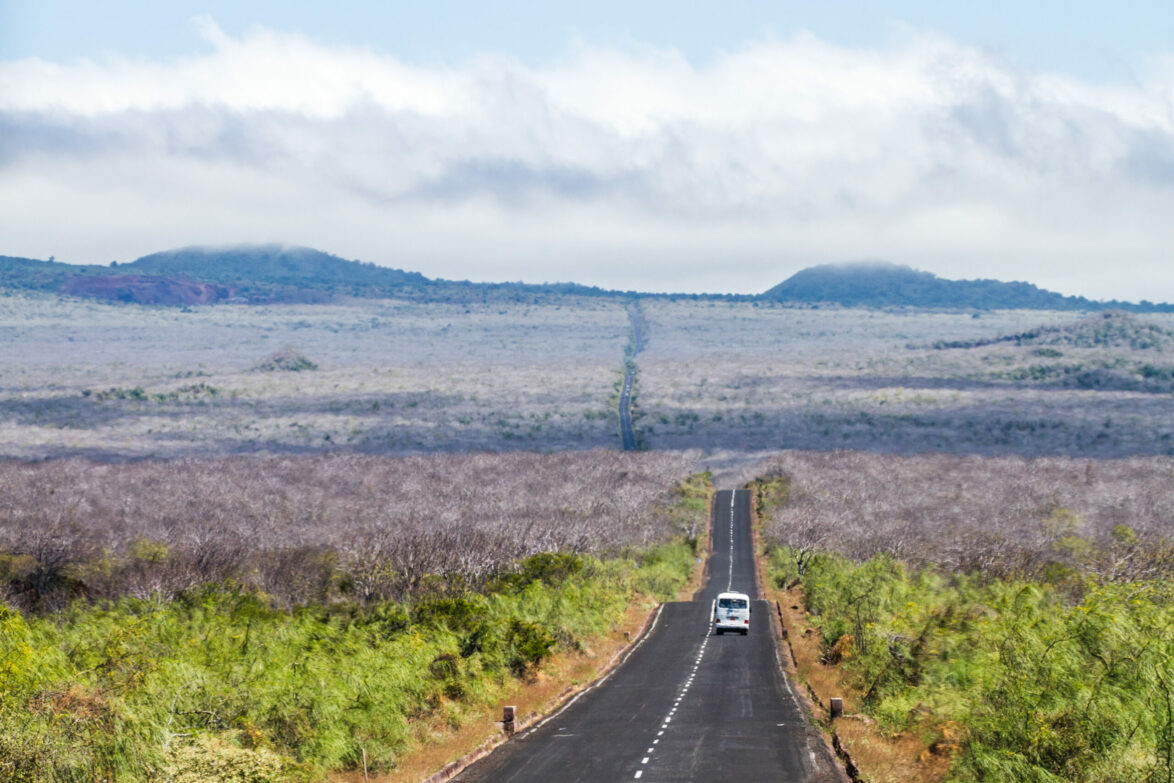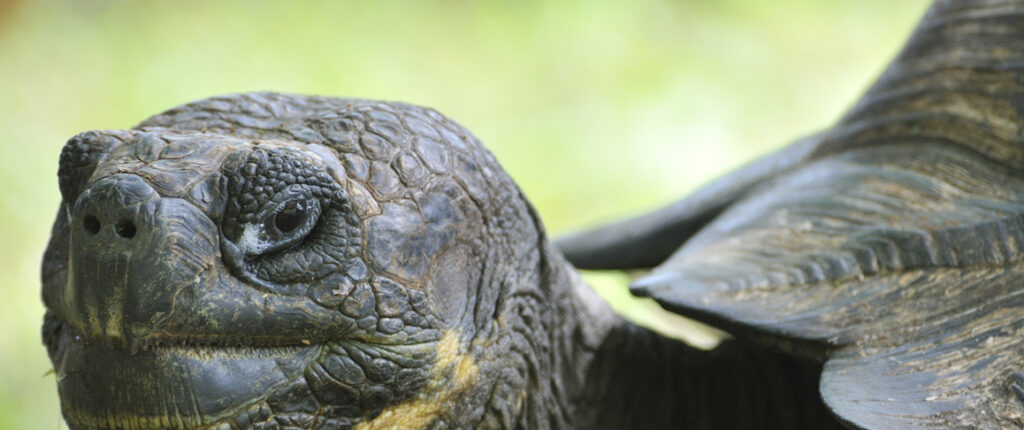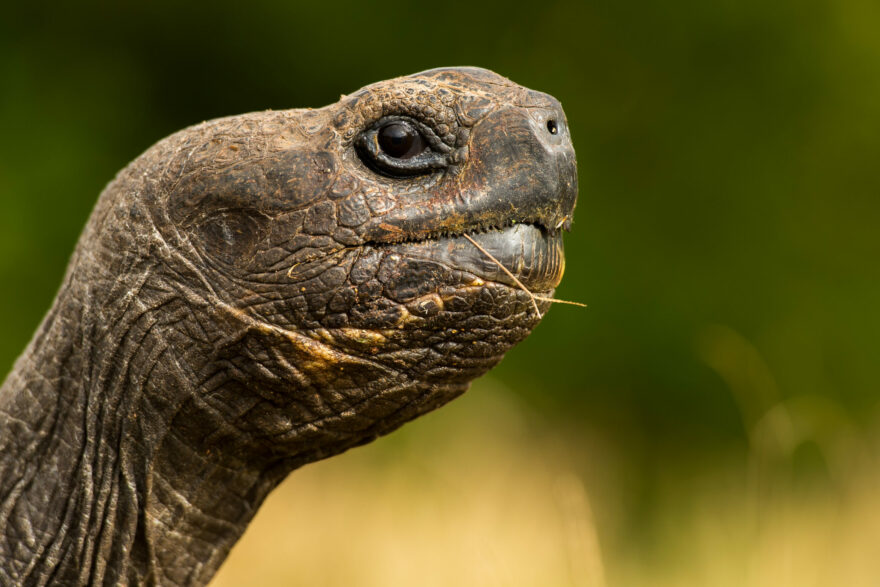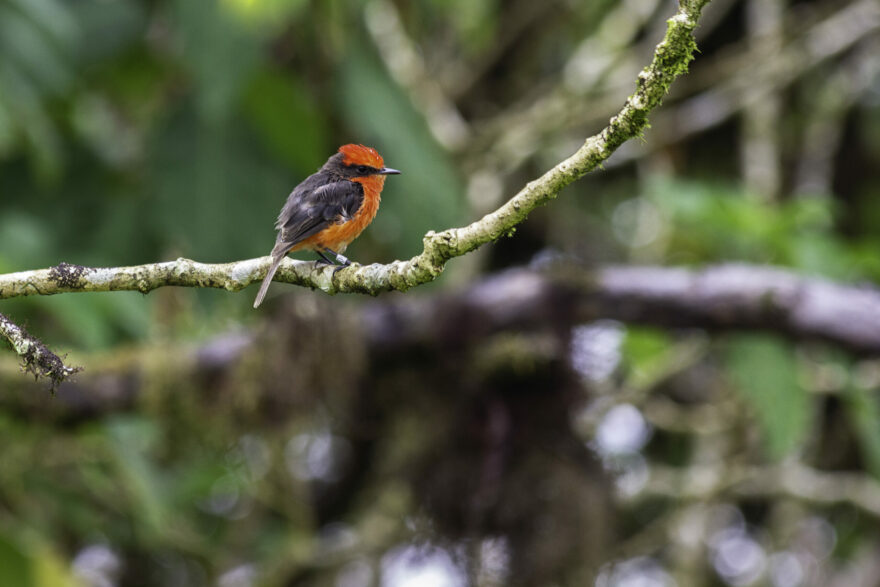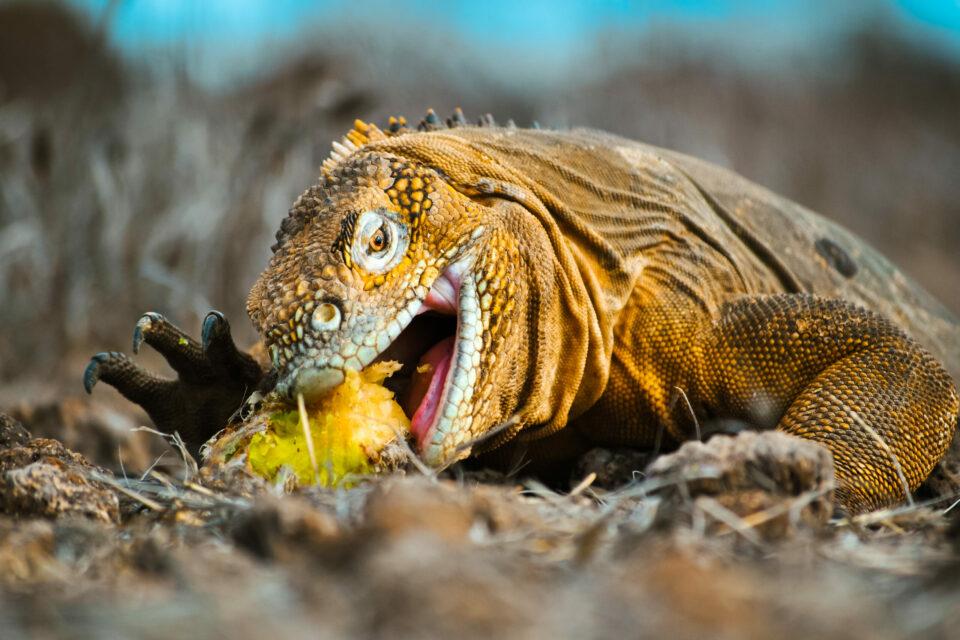
Island overview
The land mass of Santa Cruz is made up of a dormant volcano with a land area of 986 km2 and a maximum altitude of 864 metres. It is estimated that the last eruption occurred around a million and a half years ago, creating a huge lava tunnel that is over 2,000 metres long in the highlands of the island.
Santa Cruz possesses all of the various life zones present in the Archipelago, so it is not short of birding opportunities. The bright red little vermilion flycatcher is often spotted in the highlands, and Darwin’s finches are a common sight. Almost every land bird present in Galapagos can be found on Santa Cruz.
The flora of Santa Cruz is rare yet extensive. Home to the Scalesia, a large and endangered tree from the daisy family, the highlands boast lush green forests and thick, high grasses, home to the iconic giant tortoise population. The arid zone covers the lower parts of the island, home to forests of huge Opuntia cactuses which are the primary food source for many creatures, including land iguanas, mockingbirds and the large painted locust.
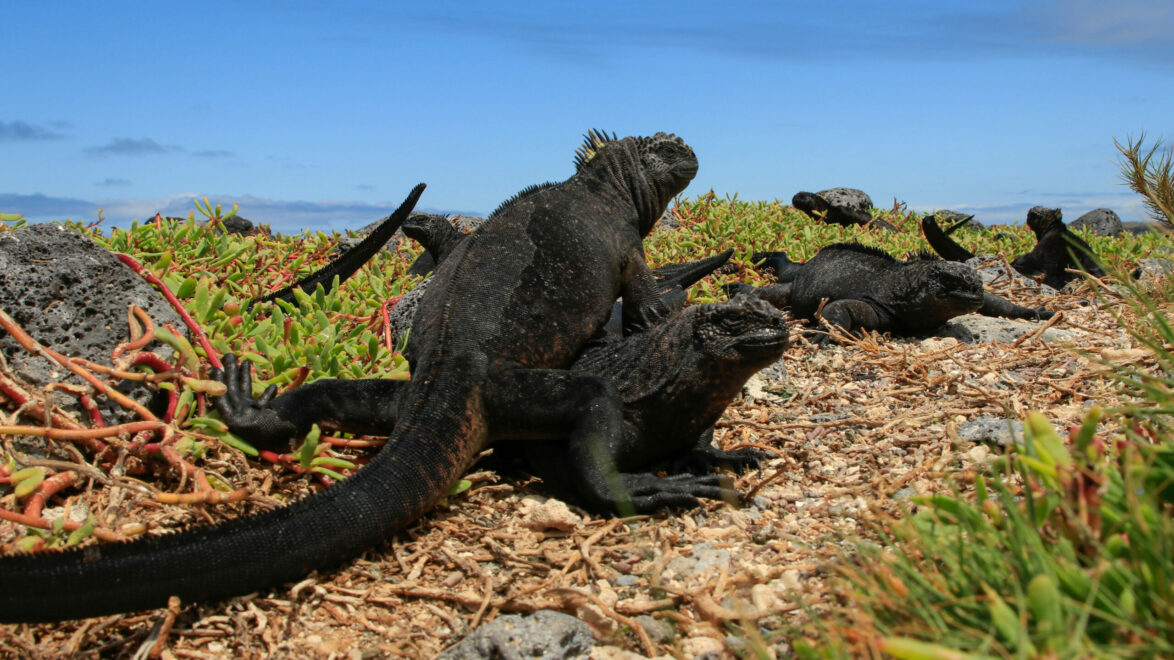
Tortuga Bay is a great place to view marine iguanas, and plenty of marine birds and Sally Lightfoot crabs can be seen along the stretch of white sand. A sheltered mangrove swamp nearby gives the opportunity to spot juvenile whitetip reef sharks and juvenile rays thanks to a wooden walkway. There are six dive sites located around Santa Cruz: Guy Fawkes Rocks, Punta Carrión, Gordon Rocks, South Plaza, Camaño Islet and Punta Estrada. Marine species to look out for include sea lions, sea turtles, various species of sharks and eels and schools of pelagic fishes.
Santa Cruz is home to the largest town in Galapagos, Puerto Ayora, and is the main hub for tourism to the Islands. Puerto Ayora currently houses over 12,000 inhabitants, the largest settlement in the Archipelago. The Charles Darwin Research Station and the Galapagos National Park headquarters are both located in Puerto Ayora. The visitor centre at the Charles Darwin Research Station contains exhibits providing insight into the evolution of flora and fauna, as well as current conservation programmes, and is also the last resting place of Lonesome George, last of the Pinta giant tortoises.
Wildlife highlights


Galapagos giant tortoise
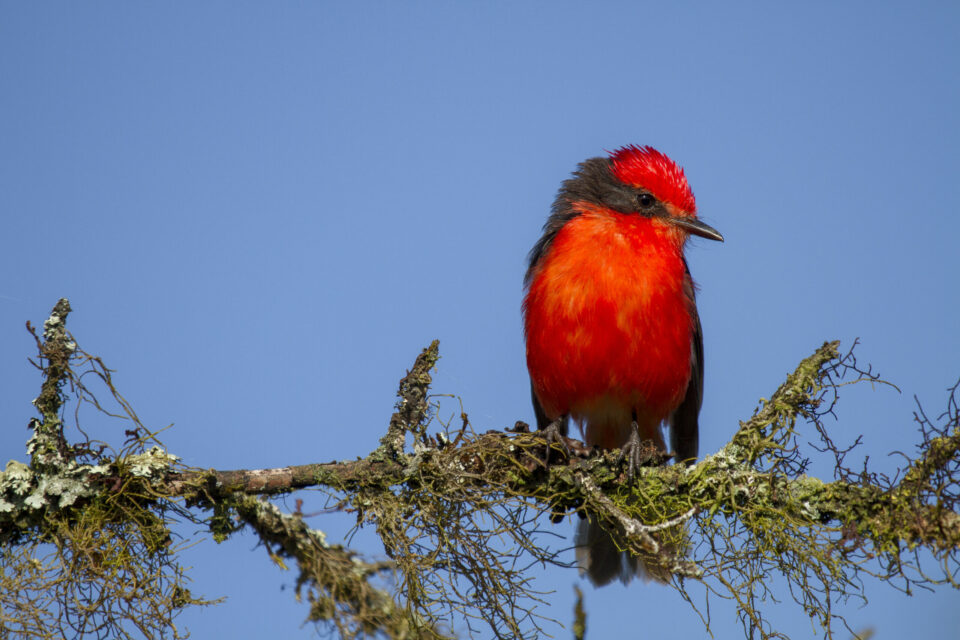
Little Vermilion Flycatcher
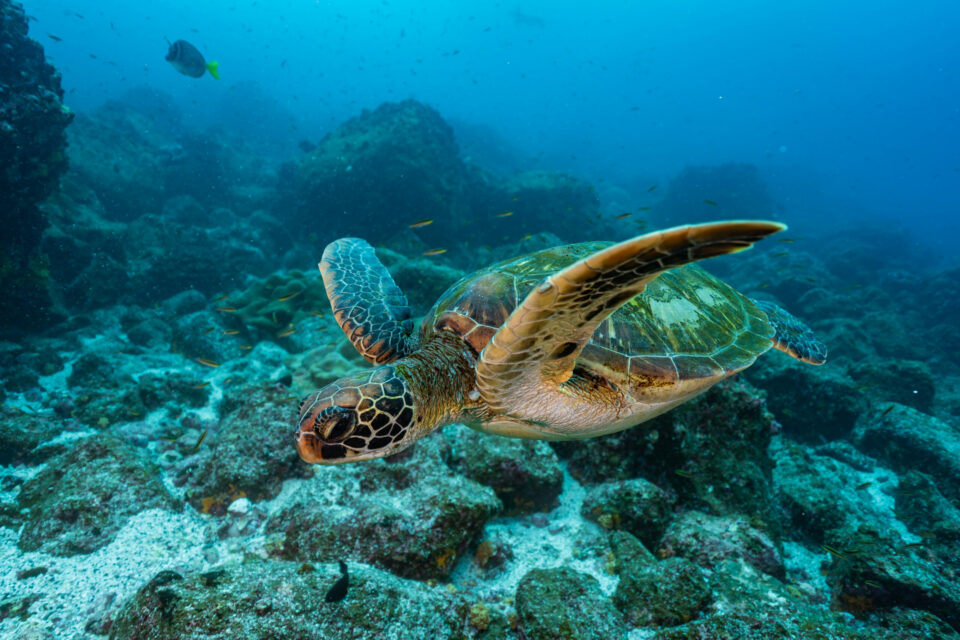
Galapagos green turtle
Conservation challenges
The growing population on Santa Cruz means that human-wildlife conflicts are on the increase, with serious concerns around issues such as waste management, unsustainable development and road traffic. Agriculture in the highlands directly impacts on the movements, health and breeding patterns of giant tortoises, which migrate every year between the highlands and lowlands. Research has shown that tortoises are picking up antibiotic-resistant bacteria from livestock farms, and can find their migration routes blocked by fences. Sadly, traffic collisions with wildlife are not unknown, and pollution is also a growing issue, particularly around Puerto Ayora, with evidence of tortoises and other wildlife ingesting plastic.
